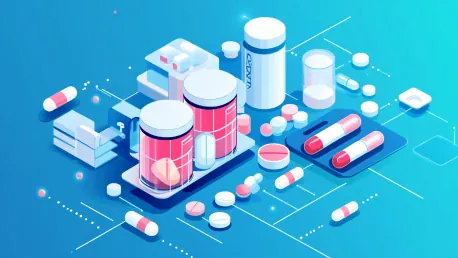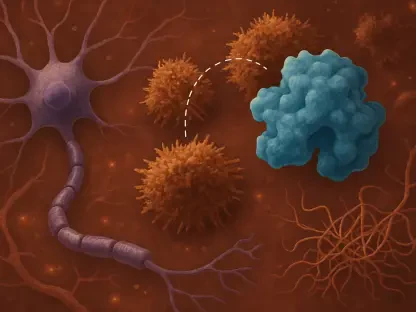The 21st century has seen the pharmaceutical industry face mounting challenges such as escalating competition and pricing pressures. Consequently, developers and manufacturers are pioneering innovative strategies to differentiate their products and instill value, particularly in the saturated generic drug market. One notable tactic gaining momentum is the development of Value-Added Medicines (VAMs). These medicines epitomize pharmaceutical innovation and present enhanced therapeutic options that distinguish themselves from traditional generics. In this comprehensive analysis, we delve into the mechanisms and strategies behind VAM development, the complexities of bringing these medicines to market, and the formulation and clinical considerations pivotal to their success.
Defining Value-Added Medicines and Their Development Strategies
Value-Added Medicines represent a unique class within the pharmaceutical landscape. Unlike generics, which primarily replicate the active ingredient and therapeutic effect of original drugs, VAMs build upon established medicine through incremental innovation. The enhancements introduced by VAMs create tangible benefits for patients, healthcare providers, and payers. These benefits often include improved therapeutic outcomes, increased adherence, and customization to specific patient demographics such as children or the elderly. This expanded focus allows VAMs to provide solutions that address the nuanced needs of diverse patient populations, which traditional generics may overlook.
The development of VAMs underscores three principal strategies, each presenting unique opportunities for pharmaceutical innovation. The first is drug repositioning or repurposing, which identifies and exploits new therapeutic applications for existing, approved drugs. For example, sildenafil (Viagra), initially developed for hypertension, found a substantial market in treating erectile dysfunction. Similarly, dexamethasone, a corticosteroid, was repositioned to treat severe cases of COVID-19. This strategy maximizes the potential of established medications by exploring their full therapeutic scope, often leading to groundbreaking treatment paradigms.
The second approach focuses on drug reformulation, aimed at developing new and improved versions of existing drugs to optimize delivery, enhance patient compliance, or target specific patient populations. An example includes the taste-masked formulation of sodium phenylbutyrate (NaPB) in Pheburane oral pellets, developed to address the bitter taste of traditional NaPB treatments for pediatric urea cycle disorders. Reformulation not only improves patient experience but can also extend a drug’s lifecycle by making it more acceptable and easier to administer, thus addressing barriers to adherence.
The third strategy involves drug combinations, where two or more active ingredients are combined into a single dosage form. Fixed-dose combinations offer advantages such as simplified treatment regimens, reduced pill burden, and synergistic therapeutic effects. Vimovo, which combines naproxen (an NSAID) and esomeprazole (a proton pump inhibitor), exemplifies this approach by mitigating gastric irritation caused by naproxen while providing pain relief. This not only enhances treatment efficacy but also improves patient compliance by reducing the complexity of medication regimens. Each strategy demonstrates the potential of VAMs to transcend the limitations of traditional generics and deliver better patient outcomes.
The Journey of VAMs: From Concept to Patient
The pathway from VAM conception to patient necessitates multiple meticulously coordinated steps, with formulation and clinical development being paramount. Formulation transforms the VAM concept into a practical product, addressing several challenges and optimizing therapeutic value and patient experience. Key formulation strategies include tailoring dosage forms and strengths, improving stability, enhancing the sensory experience, optimizing release profiles, and rethinking administration routes. These strategies are implemented to bridge the gap between innovation and patient-centric medication.
Tailoring dosage forms and strengths is crucial, particularly for pediatric or geriatric populations that require easier administration. Transforming solid dosage forms into liquids, or developing age-appropriate formulations like mini-tablets or orally disintegrating strips, caters to specific patient needs. Modifying dosage strengths allows for personalized treatment regimens, ensuring optimal efficacy and safety for a diverse patient base. This level of customization underscores the superior therapeutic edge that VAMs offer over generic drugs.
Improving stability is another critical aspect of drug product development, especially for liquid formulations prone to degradation. Strategies to enhance stability include selecting compatible excipients, optimizing packaging materials, and implementing specialized techniques like lyophilization or stabilizers. These measures ensure the product maintains its effectiveness throughout its shelf life, ultimately leading to better patient outcomes. Stability also affects distribution logistics, making it a vital component in the VAM lifecycle.
Enhancing the sensory experience of a medicine significantly impacts patient acceptance and adherence. The taste, smell, and texture of a drug can either encourage or deter patient use. Taste-masking technologies, such as coatings and flavoring agents, are essential for transforming unpalatable active ingredients into more agreeable forms. Optimizing texture and mouthfeel further enhances patient experience. This attention to sensory detail helps in improving compliance, particularly among young or elderly patients who may be sensitive to unpleasant tastes or textures.
Ensuring Safety and Efficacy: Clinical Considerations
Establishing the safety and efficacy of VAMs through clinical development is crucial for their successful market entry. Clinical studies are necessary in several scenarios, including novel claims, novel combinations, pediatric populations, and for assessing the impact of modifications. These studies provide robust evidence to support the enhanced therapeutic claims of VAMs, differentiating them from traditional generics. They also address regulatory requirements, ensuring that new formulations meet stringent safety and efficacy standards.
For VAMs making novel claims regarding safety or efficacy compared to reference products, clinical data from controlled studies are required. This could include demonstrating superior efficacy in specific populations or reduced side effects, thereby validating the value proposition of the VAM. These claims often drive the market differentiation necessary to justify premium pricing and broader acceptance by healthcare providers and payers. Ensuring these claims are substantiated through rigorous clinical trials is a critical step in the VAM development process.
Novel combinations of active substances also need clinical studies to evaluate safety and efficacy, particularly if there is limited supporting literature. Drug-drug interaction studies may assess potential interactions between combined active ingredients. These studies ensure that the combination does not lead to adverse effects and that the synergistic benefits are real and measurable. This data is essential to establish therapeutic advantages over single-agent treatments and to secure regulatory approval.
VAMs intended for pediatric use might require clinical studies to establish safety and efficacy, as extrapolating adult data may not suffice. Children often metabolize drugs differently, and their developing bodies can respond unpredictably to medications designed for adults. Tailored clinical trials for pediatric populations ensure that these medications are both safe and effective, addressing a significant unmet need in a demographic that often requires specialized treatment options. This focus on pediatric studies underscores the commitment to delivering truly patient-centric therapies.
Modifications in formulation, strength, release profile, or administration route likely to alter the drug’s blood concentration profile necessitate bioequivalence studies to compare pharmacokinetic properties with reference products. These studies are pivotal in proving that the VAM performs equivalently or superiorly compared to existing drugs. Addressing bioequivalence issues early in the development process reduces the risk of regulatory setbacks and ensures smoother market entry for the VAMs.
Addressing Bioinequivalence
Sometimes, bioequivalence may not be fully achievable due to differences in formulation or release profiles. Strategies to address bioinequivalence include providing clinical justification, proposing dose adjustments, and formulation optimization. These measures ensure that any differences in pharmacokinetic parameters do not translate into clinically significant differences in outcomes. This scientific rigor is essential to maintain the therapeutic integrity of VAMs and to meet regulatory standards.
Providing clinical justification for bioinequivalence involves demonstrating that differences in pharmacokinetic parameters do not translate into clinically significant differences in outcomes. This can be achieved through detailed clinical trials and real-world evidence that highlight the therapeutic benefits of the VAM despite pharmacokinetic variations. This approach reassures healthcare providers and patients of the drug’s efficacy, fostering trust in the new therapeutic option. Clinical justification often serves as a bridge to navigate regulatory hurdles and market acceptance.
Another strategy involves proposing dose adjustments based on bioequivalence studies to ensure similar therapeutic effects. Dose optimization ensures that patients receive the intended therapeutic benefits without compromising safety. This approach is particularly useful when dealing with medications that have narrow therapeutic windows. Dose adjustments based on thorough pharmacokinetic analysis maintain the balance between efficacy and safety, which is crucial for patient adherence and overall treatment success.
Formulation optimization may also be employed to minimize pharmacokinetic differences and achieve bioequivalence. Revisiting the formulation allows developers to tweak components to better match the reference drug’s release profile. This iterative process ensures that the final product closely aligns with the therapeutic benchmarks set by the original medication. By achieving closer bioequivalence, VAMs can more readily gain regulatory approval and market acceptance, ultimately benefiting patients with improved therapeutic options.
The Future of VAMs and Strategic Partnerships
In the 21st century, the pharmaceutical industry has encountered significant challenges including rising competition and pricing pressures. As a result, developers and manufacturers are employing creative strategies to differentiate their products and add value, especially in the crowded generic drug market. One particularly effective strategy that has been gaining traction is the creation of Value-Added Medicines (VAMs). These medicines are the embodiment of pharmaceutical innovation, offering improved therapeutic options that set them apart from standard generics.
This in-depth analysis will explore the processes and strategies essential for VAM development. We will look into the complexities involved in bringing these medicines to market, as well as the formulation and clinical aspects crucial to their success. By understanding these factors, we can better appreciate how VAMs can offer enhanced patient outcomes and provide a competitive edge in a challenging industry landscape.
Whether through optimized drug formulations, novel delivery systems, or enhanced efficacy, VAMs represent a vital evolution in the pharmaceutical sector, promising better healthcare solutions and driving forward the industry’s capacity for innovation. This thorough examination of VAMs will uncover the pivotal elements that make these advanced medicines a critical part of the modern pharmaceutical strategy.









